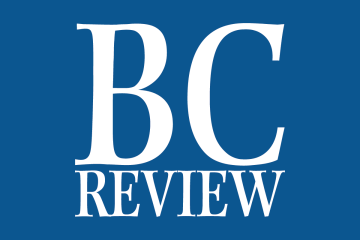Preservation requires proper planning, prioritizing
Preserving the past. It’s vital in a city like ours. After all, we’re the town that built Hoover Dam. But over a lifetime, I’ve learned some important lessons about historic preservation (both do’s and don’ts) that I think are worth sharing.
First the do’s, or what I refer to as the five p’s of preservation.
Priorities. Lesson No. 1 is that you can’t save everything. If you try, you’ll fail. There’s not enough money or space in the world, let alone enough time and energy, to salvage every building and artifact that’s old. Nor is everything worth saving simply because it’s historic. In fact, one of the things that makes a treasure a treasure is that it’s unique or at least rare. But if you saved everything, then very little would be unique or rare, meaning that we would no longer have any real treasures.
So the most important step in any successful historic preservation effort is to prioritize — in other words, to identify the top treasures that are truly worth focusing on. There’s no magic number, but in a city the size of ours, I’d wager that at any given time you can probably count the treasures worth saving on your fingers (with perhaps a few toes thrown in to help).
Next, procedures. You can’t prioritize without standard procedures in place to assist in deciding what’s a treasure and what’s not. Again, there’s no magic formula. But there at least needs to be some guidelines so that decision-makers know how to pick and choose from among the many possibilities. For instance, if there were, say, 4,500 homes in Boulder City and another 250 nonresidential structures but only 15 could feasibly be saved in any given generation, then what factors should decision-makers consider, and how much weight should be given to each?
If you and I were asked to decide, we might disagree about the relative importance of aesthetics, architecture, age, salvageability, acquisition and rehabilitation costs, historical significance, deviations from the original, sentimental value, public accessibility and other such tangible and intangible factors. So procedures are important to ensure that there’s at least a measure of uniformity in the decision-making process, regardless of who’s making the decisions or when.
Third, plans. Once priorities are identified using standard procedures, plans become essential to preserve these assets into the foreseeable future.
And because every asset will have its own unique set of characteristics and circumstances, each one will need its own tailor-made plan, including, of course, how to fund it, whether incentives (carrots) or restrictions (sticks) will be the prime motivators and so forth.
Incidentally, it probably won’t surprise you that successful preservation plans for privately owned buildings and heirlooms are almost always very different than those that work best for publicly owned structures and artifacts.
Purpose is also critical. Without a sustainable reason for being, no treasure will long survive. If it’s a home, will someone continue to live in it at a reasonable price? If it’s a boarded-up business, can it be revitalized into a venue that people will want to patronize, or does it instead need to be repurposed into something more attractive?
Regardless, every preservation project’s purpose needs to be well-publicized and readily perceptible with significant buy-in from the public. Its purpose also needs to be legitimate and sustainable (including monetarily), rather than strained or fabricated (such as subsidized ventures).
And that leads to the final p: the public vs. private dichotomy.
Although preservationists often look to the government to fund their efforts, I’ve observed that, almost without exception, private individuals, ventures, businesses and nonprofits are much better equipped to preserve history than their public counterparts. Governments can assist and often do, especially with priorities, procedures and plans, but the private sector working in a market economy is far and away the best-suited to create sustainable purposes for our treasures and to provide the funding to get it done.
Our city’s most prominent example of that is the Boulder Dam Hotel, a treasured community icon saved primarily with lots of volunteer sweat equity and lots of private dollars, together with a little public assistance for the Boulder City-Hoover Dam Museum, its historic preservation sister.
Speaking of p’s, that’s a pretty perfect public-private partnership that we can all learn valuable lessons from.
Well, I’ve run out of space for all the historic preservation don’ts, but those would include trying to force private property owners into a box by dictating to them what they can and can’t do with their own property; taking reactionary, knee-jerk and very fleeting stabs at historic preservation in highly energized spurts just once in a blue moon when somebody decides to demolish or discard a perceived treasure (as opposed to steady and sustained efforts over time); and baiting private owners into protracted and very expensive lawsuits with inflammatory political rhetoric and ill-advised preservation policies.
In the long run, employing methods such as these will only make historic preservation less likely, not more. Let’s hope that 20 years from now, history will look back on us and note with approbation that we all learned our historic preservation lessons well.
Rod Woodbury is mayor of Boulder City. He has been serving on the City Council since 2011 and is the president and managing share






